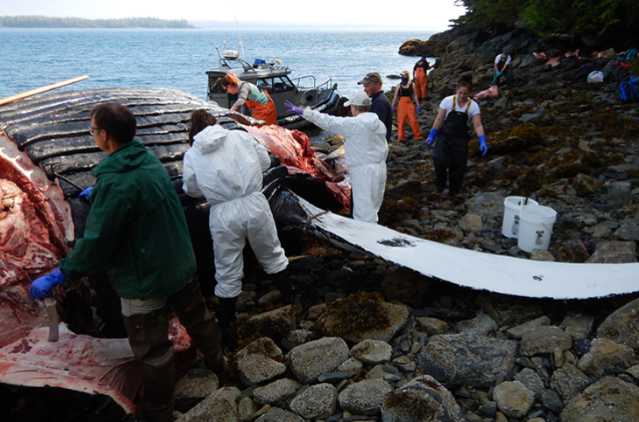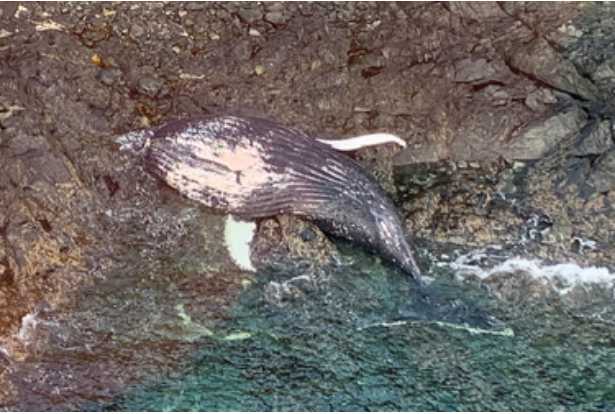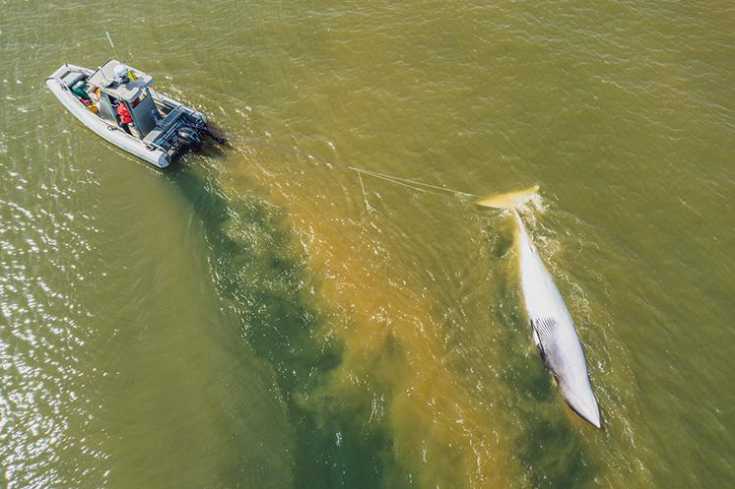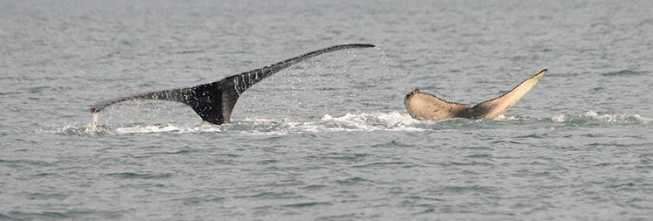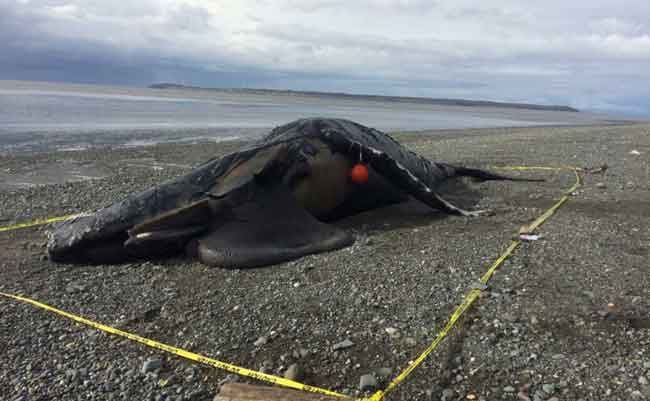
NOAA Fisheries is asking the public to stay away from the carcass of a humpback whale that washed ashore at Kincaid Park. The whale is located on the beach, about a mile from the sand dunes.
“Marine mammals can transmit disease to humans and pets, so people should stay away, and keep their pets away from this stranded whale,” said NOAA Fisheries Marine Mammal Stranding Coordinator Mandy Migura. “There is also the added concern that this carcass will likely attract bears, so please keep a safe distance from this carcass.”
This subadult male humpback whale is the same whale reported floating in Knik Arm last week, as confirmed by the orange buoy which NOAA Fisheries had attached to the pectoral flipper when the whale was still floating for the purposes of answering this very question.
“This dead whale was first reported to NOAA Fisheries 10 days ago floating in Knik Arm,” said Migura. “Now that is has beached, we can collect samples, but because of how long it has been dead, we will be limited in our ability to learn about its health and cause of death.” NOAA Fisheries is making plans to perform a necropsy this week, depending on logistics.[xyz-ihs snippet=”Adsense-responsive”]No parts of a marine mammal listed under the Endangered Species Act (ESA) can be collected, except for authorized scientific purposes. There are three distinct population segments (DPS) of humpback whales in Alaska waters: the Western North Pacific DPS is listed as endangered; the Hawaii DPS is not listed under the ESA; and the Mexico DPS is listed as threatened. Genetic analysis to determine which population this particular humpback is from has not been completed.
“We are uncertain at this time whether this individual is from one of the ESA-listed populations,” added Migura. “If it is, it would be illegal for anyone from the public to collect any parts from this whale.”
NOAA Office of Law Enforcement has cordoned off the humpback carcass, with assistance from Kincaid Park management.
To learn more about NOAA Fisheries in Alaska, visit alaskafisheries.noaa.gov or www.afsc.noaa.gov.
Source: NOAA



